The Big Book of Pain: Torture & Punishment Through History (55 page)
Read The Big Book of Pain: Torture & Punishment Through History Online
Authors: Daniel Diehl

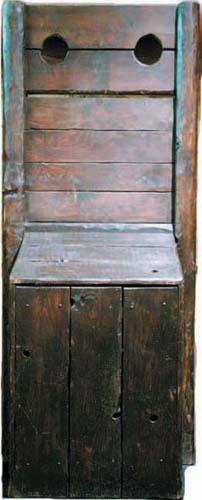
This instrument, sometimes referred to as ‘the throne’ was a pillory-like chair designed to hold the victim upside down by his feet. As you can see in Goya’s illustration (left) the victim, once locked into place, would often have been flogged (note torturer in shadow on the left of the image) or have water poured into his mouth to choke him (note pitcher). Additionally, in the process of inquisition there would be a questioner (centre) and a scribe recording any statements the victim may have been able to make. This device was favoured by inquisitors in areas where the law permitted only one torture session of any given subject. With this device they could declare that they only inflicted one session – even if that session may have lasted for weeks on end. If done carefully, not only would these excruciating tortures have been non-lethal, but they would also have not left any noticeable marks on the body of the victim.
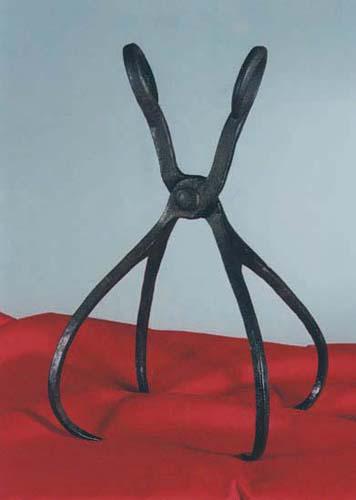
This device is known as both the ‘witch’s spider’ and the ‘Spanish Spider’. These four-pronged, scissor-joined claws were basic tools in the torture dungeon. They served, both red-hot and cold, for the lifting up of the victim by the buttocks, breasts, belly or head, often with two prongs in the ears or the eyes. They can still be found in the Third World today, especially for the interrogation of women.
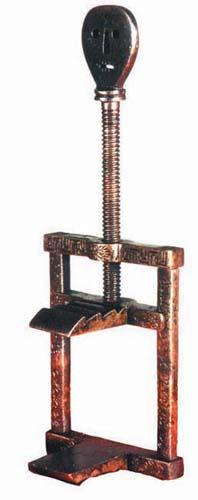
A prisoner being subjected to this device would have been strapped down before having this forced into his or her mouth and then screwed open. This would result in broken teeth, followed by a broken jaw and then finally (if they were strapped face down) damage to the vertical vertebrae at the back of the neck. Not only could this torture be inflicted upon them, but they could be left in the grip of the jawbreaker for any length of time.

There are many types of bonds that tie humans to inhuman burdens: leg irons, arm irons, belts, and collars in great variety. This example is typical of the idiomatic ball and chain. The prisoner locked within this iron collar would be forced to carry this weight about with him for a long time; weeks, years, perhaps even for the rest of his life. This particular stone weighs 27 lbs (over 12 kg).
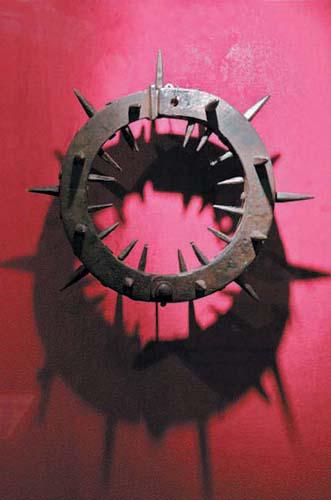
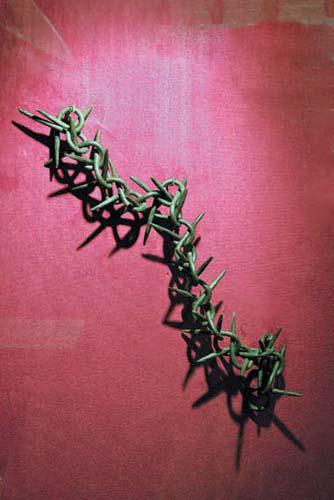
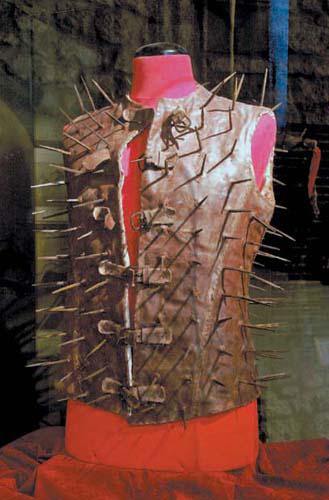

Furnished with spikes on all sides, this device (above left), which weighs more than 11 lbs (5 kg) is locked around the victim’s neck, constantly and systematically eroding the flesh of the neck, shoulders and jaw to the bone. Infection, gangrene, sepsis and finally the erosion of the bones themselves (especially the exposed vertebrae) can prove fatal. The spiked necklace (top right) served a similar function. In the bottom right image we can see an example of a
cilice belt
. While these could be (and were) employed by torturers, they were more commonly self-imposed for the purposes of self-mortification. Whether worn around the torso or around a thigh or bicep, these devices furnished with sharp barbed spikes (222 in this example) on the inside were, and in some circles still are, dear to religious self-mortifiers. Below left we can see an example of a coat of thorns. Rather than serving as a punishment, this is found to be worn in certain parts of the world by torturers or executioners themselves; it certainly would have been helpful in dissuading any victim from readily fighting back.
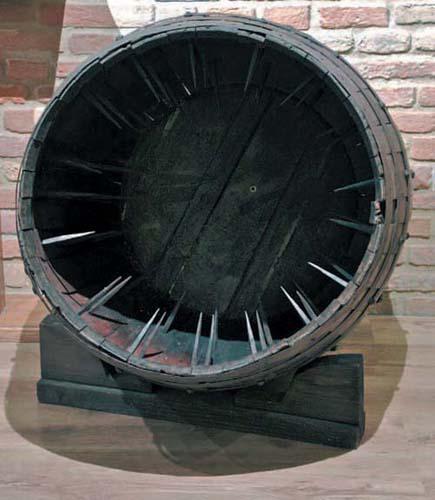
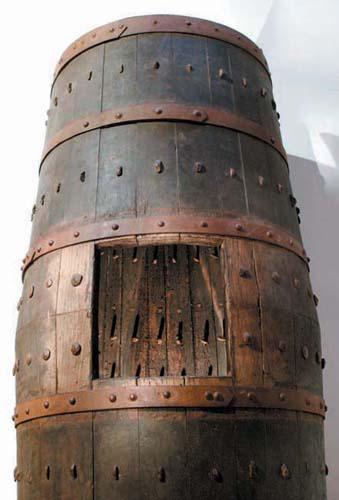
Other books
Don’t Know Much About® Mythology by Davis, Kenneth C.
For the Strength of You by Victor L. Martin
Death By A HoneyBee by Abigail Keam
Shadow of the Wolf by Kelley, Anastacia
Rikers High by Paul Volponi
His Best Mistake by Kristi Gold
A Slow-Burning Dance by Ravenna Tate
Polly by Freya North
Unthinkable: Who Survives When Disaster Strikes - and Why by Amanda Ripley
Tomorrow's Lies (Promises #1) by S.R. Grey